Go to the previous chapter: How to use a breadboard.
Sometimes you may wonder why your circuit is not working! Most probably you made a mistake! Connection mistakes on breadboards are not vital, since connections are temporary. You can easily rearrange the circuit by removing or replacing components.
But you must pay attention to some common mistakes and avoid them to save time and finish your project smoothly. Here are some mistakes you need to be aware of:
Forgetting to connect both sides of the breadboard with jumper wires
As we mentioned, the left side of the breadboard is totally isolated from the right side, and with some full-size breadboards the upper half of the power rails is isolated from the lower half. Jumper wires will solve the problem.
Connecting leads to the wrong row
Remember! The five holes in the each row are electrically connected. Do not miss that row.
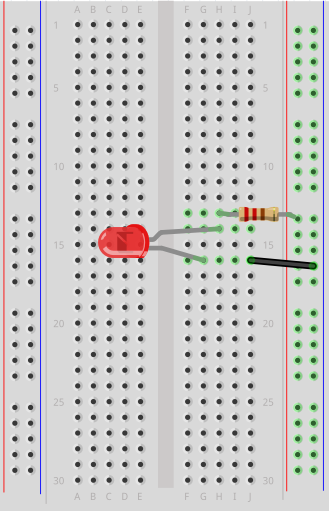 |
The LED won’t work, because the resistor is connected to the wrong row.
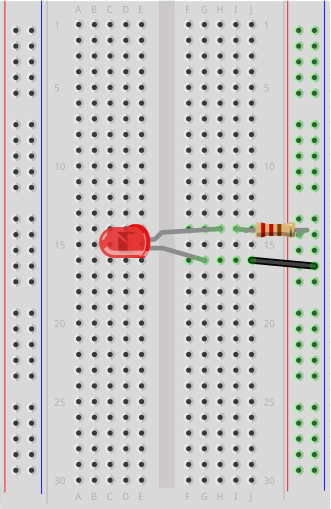 |
The LED will work, because the resistor is connected to the correct row.
Mixing positive (+) and ground (-) wires
This is much the same as connecting leads to the wrong row. If you mixed up positive (+) with ground (-) your circuit is not going to work at all.
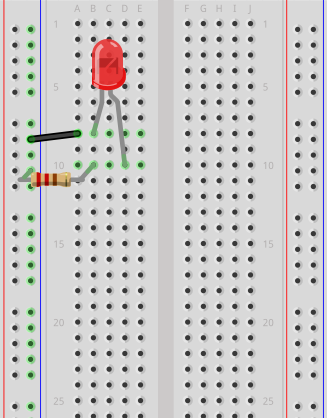 |
Wrong connection, because the resistor is connected to the ground bus (-).
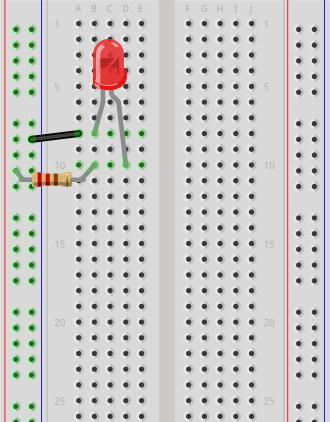 |
Good connection! The resistor must be connected to the positive bus (+).
Reversing polarity
Some components have positive (+)and negative (-) leads, such as LEDs and electrolytic capacitors. You must consider the correct polarity to avoid damaging the components and the breadboard as well.
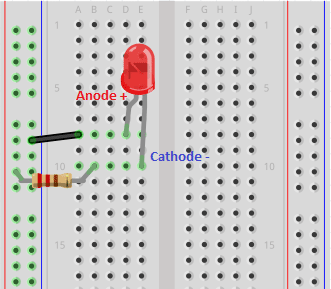 |
WRONG! Anode (+) must always be connected to positive bus (+), and the Cathode (-) must be connected to the ground bus (-).
Insufficient contact between leads and clips
If you leave the leads not pushed firmly inside the breadboard holes, the connection between the conductive clips and components will be weak, this can result in an unstable circuit or not functioning circuit.
Connecting leads of one component in the same row
Each component has at least two leads, and each lead has a different purpose in the circuit. Avoid putting the leads of one component in the same row to prevent a circuit short. In the case of ICs, always place them over the middle divider.
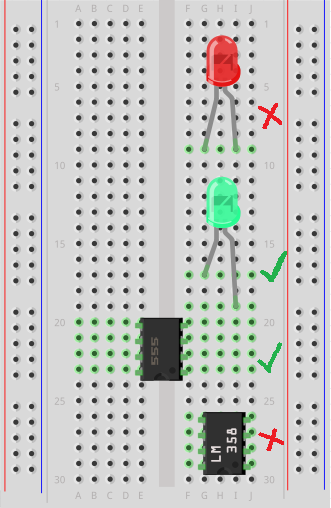 |
The red LED and LM 358 IC are connected the wrong way. While the green LED and 555 IC are connected properly.
Touching leads
Another reason for a short the circuit is when components touch each other accidentally. Some components have long leads, such as LEDs and resistors. Try to connect them apart from each other to avoid undesired lead contact.




